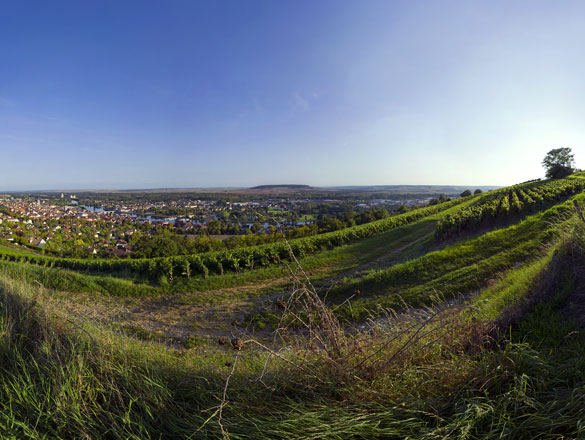

The vineyards of Bourgogne produce some great wines with a historical and international reputation. However, the region is not simply limited to its iconic appellations. In addition to its Village Premier Cru and Grand Cru AOCs, it also produces a range of wonderful Régionale and Village appellations to explore.
You will also find a full list of the Bourgogne’s Climats and lieux-dits on this page.
Check out the complete list of the 84 Bourgogne appellations.
However, your exploration has only just begun. Bourgogne wines have never before offered such high quality. Besides our range of internationally celebrated wines, try some of our lesser-known appellations where there are lots of surprises in store.
And for a fun way to find out more about the wines on offer, try out our “Which Bourgogne wine is right for me?” quiz, or check out Bourgogne Maps to take an interactive tour of the region.
Regionale Appellation ; Dénomination Géographique Complémentaire
VIGNOBLES DE CHABLIS ET DU GRAND AUXERROIS
31 juillet 1937
Reds and gris - Pinot Noir and Pinot Gris.
Whites - Chardonnay and Pinot Blanc.
Area under production*:
1 hectare (ha) = 10,000 m² = 24 ouvrées.
Reds and rosés: 11.58 ha
Whites: 0.69 ha
Average annual yield**:
1 hectolitre (hl) = 100 litres = 133 bottles.
Reds and rosés: 674 hl
Whites: 37 hl
*In 2022 **5-year average, 2017-2021
The Bourgogne Côte Saint-Jacques Régionale appellation covers still red, white, and gris wines produced in an area of the town of Joigny that was defined in 1987.

The reds are pale cherry red in color, with hints of ruby red. On the nose, there are notes of raspberry, cherry, and strawberry, with aromas of rose and peony. In the mouth, it is fresh and dynamic, and light with fleshy fruitiness, underscored by sophisticated tannins. The finish is long with delicate acidity and a smooth finish.
The gris wines are salmon pink in color, with touches of silvery pink and gray. The nose offers aromas of redcurrant, peach, pomelo, orange, and white blossom. A fruitiness develops on the palate, that is fleshy and sometimes offers suggestions of flint.
The whites are pale silver yellow in color, with the nose offering aromas of pear, peach, white rose, and acacia. It is smooth and fruity in the mouth, with a finish topped off by spicy notes and flint.

Red: Its fruity aromas and delicate structure make it perfect as an aperitif, served with cold cuts, jambon persillé and savory tapas. Its accessible nature comes out with convivial, family dishes like roast chicken or chicken fricassee, roast beef, blanquette of rabbit, veal steaks with tomato and parmesan, lasagna, paupiettes of beef, or belly of pork. In terms of cheeses, it pairs well with creamy soft cheeses like Brie, Chaource, and Pont l’Évêque.
Serving temperature: 15-17°C.
Gris: Its orangey, tropical freshness makes for an ideal aperitif with exotic tapas like passion fruit guacamole; brochettes of Italian ham and cheese; tzatziki with salmon; or avocado, goat cheese, and sweet pepper tartare. It would be wonderful with a carpaccio of scallops with clementines; crab salad with white peaches; fennel, avocado, and orange salad; cabbage and carrot salad with mint; fish stew with Espelette pepper or turmeric cream; a blanquette of fish; a pumpkin velouté with orange; or chicken breast with orange and onion confit. Fresh cheeses and creamy soft ones also pair well.
White: Its smoothness and fragrant freshness make it the perfect accompaniment for an aperitif served with saline and savory tapas such as a pâté of Chaource whipped with hazelnut oil, or various tartares like crab with Espelette pepper, salmon with olive oil and herbs, or avocado with lemon and shrimp. It also makes a great pairing with smoked salmon rolled with cream cheese and chives, summer salad with Mimolette cheese, fish grilled on the skin, fish fillet with potato mashed with fleur de sel, hake risotto, chicory gratin, leek tart, or zucchini flan. In terms of cheeses, it is delicious with goat cheeses, Comté, Beaufort, and Gruyère.
Serving temperature: 11-13°C.

The vines grow on the slopes of the Côte Saint-Jacques, the appellation’s eponymous Climat. The most northerly vines in Bourgogne, they look down over Joigny, on the right bank of the River Yonne. The first written evidence of there being vines in Joigny dates back to 1082 and winegrowing flourished here throughout Medieval times. In 1704, Louis XIV introduced the gris wine of Côte Saint-Jacques to the court in Versailles. At its height, the vines here covered 574 hectares. After phylloxera decimated the trade, it wasn’t until 1970 that it was revived by passionate winemakers determined to carry on local tradition.

The vines of Bourgogne Côte Saint-Jacques are located at between 135-210m above sea level, on southeast-facing slopes. On the plateau, the forest of Othe acts like a barrier to the winds from the north. Its proximity to the river Yonne provides frost protection for the lower plots that tend to mature earlier. The vines take their nutrients from chalky formations from the Upper Turonian, characterized by white chalk with flint, evolving to chalk without flint towards the summit.
